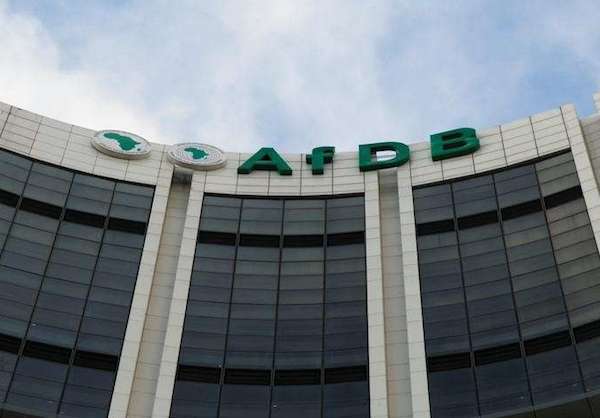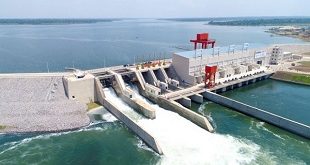
The latest African Development Bank (AfDB) Economic Outlook for 2018 predicts 4.1% average growth
COMMENT | KAUSHIK BASU | The African Development Bank (AfDB) has just published its African Economic Outlook for 2018. This year’s revamped publication – shorter than usual, analytically well-structured, and written in lucid prose, without hyperbole – in some ways mirrors Africa’s own transformation, as it raises hopes that we may at last be witnessing the continent’s long-promised economic arrival.
Africa’s rise has been a long time coming. In the 1960s, hopes were high. The remarkable leaders of the independence generation – such as Ghana’s Kwame Nkrumah and Kenya’s Jomo Kenyatta – received advice from the world’s top economists. The Caribbean-born Nobel laureate Arthur Lewis became Nkrumah’s Chief Economic Adviser.
In India, we read about these leaders’ friendship with our own post-independence prime minister, Jawaharlal Nehru, and the hope for a new dawn for all emerging economies. And many emerging economies did indeed take off. In the late 1960s, some East Asian economies surged ahead. Beginning in the early 1980s, China began its decades-long rise. And, from the early 1990s, India’s economy also began to grow robustly, with annual rates reaching the 9% range by 2005.
But Africa remained stagnant, mired in poverty. Ironically, it was the continent’s resource wealth that hampered economic progress, as it fueled conflicts among governments and insurgents eager to control it. The resulting political instability attracted outsiders keen to exploit governments’ weakness. As the Indian poet and Nobel laureate Rabindranath Tagore put it in his 1936 poem “Ode to Africa,” which played on perceptions about who is “civilized,” the continent fell prey to “civilization’s barbaric greed,” as the colonists “arrived, manacles in hand/Claws sharper by far than any of your wolves.”
Finally, at the turn of the twenty-first century, things began to change for Africa. A few dynamic leaders, democratic stirrings, and emerging regional cooperation led to a decline in poverty and a pickup in growth. Commodity exporters faced a setback around 2014, when prices plummeted. But this turned out to be a blessing in disguise, because it forced countries to diversify their economies and increase production – factors that supported renewed growth.
According to the AfDB report, Africa’s 54 economies grew by 2.2% in 2016, on average, and 3.6% in 2017. In 2018, the AfDB predicts, average growth will accelerate to 4.1%, while the World Bank expects Ghana to grow by 8.3%, Ethiopia by 8.2%, and Senegal by 6.9%, placing these countries among the world’s fastest-growing economies. And these figures are not wishful thinking: in 2016, Ethiopia’s GDP grew by 7.6%.
Of course, serious challenges remain. South Africa, the continent’s strongest economy, is now facing the difficult task of tackling its deep-rooted corruption. Yet, with the African National Congress now apparently determined to replace President Jacob Zuma’s scandal-ridden administration with one led by the party’s new leader, Cyril Ramaphosa, there is reason for hope.
More broadly, many African countries need to find ways to create more employment – and fast. The share of the working-age population is rising faster in Africa than in any other region. This “demographic dividend” has immense potential. But if job creation stalls, the unemployed or under-employed are likely to become frustrated – a recipe for conflict.
Consider the case of Tanzania. Thanks to President John Magufuli’s effort to mobilise more domestic revenue to support increased development spending, the economy is doing well. But, with roughly 800,000 individuals entering the labour force each year, Tanzania needs much more working capital, better infrastructure, and educational reform aimed at ensuring that workers have the skills, resources, and opportunities to secure decent jobs.
The same is true of Ethiopia. In the last couple of decades, the country has made great strides in export-led growth, supported by a growing industrial sector and large investments from China. Now, it is poised to take over as the economic powerhouse of East Africa. Yet the urban youth unemployment rate stands at 23.3%. Left unchecked, this situation could easily end up fueling ethnic conflict and political turmoil.
Another, related challenge concerns resource mobilisation: countries need funds to invest in infrastructure, human capital, and the creation of trade and digital links within and beyond Africa. The AfDB report estimates that, for infrastructure investment alone, the continent needs some $170 billion per year, which is $100 billion more than is currently available. As it stands, Africa receives a total of about $60 billion in foreign direct investment each year.
To close the gap, African governments must attract more money. That will require establishing effective regulatory structures that facilitate long-term borrowing and repayment, while ensuring that lenders do not exploit borrowers, as has occurred everywhere from rural India to the United States mortgage market.
The challenges are daunting, to say the least. But there are lessons that African countries can learn from one another. For example, Ghana’s smooth transfer of power after the December 2016 election set a positive democratic example. Nigeria’s Lagos State and Tanzania have done a good job of mobilising internal resources for development. Add to that the emergence of an indigenous intelligentsia in the region, exemplified by organizations like the AfDB, and it seems that Africa’s moment may have arrived at last.
Kaushik Basu, former Chief Economist of the World Bank, is Professor of Economics at Cornell University and Nonresident Senior Fellow at the Brookings Institution.
*****
Copyright: Project Syndicate, 2018.
 The Independent Uganda: You get the Truth we Pay the Price
The Independent Uganda: You get the Truth we Pay the Price


